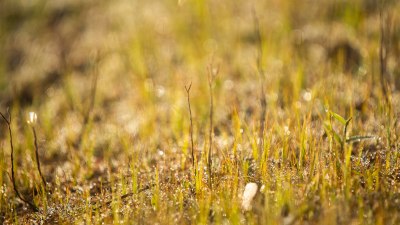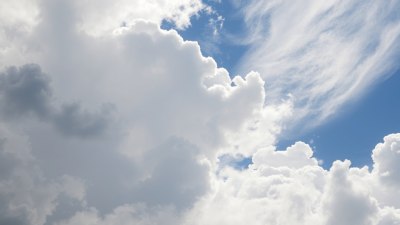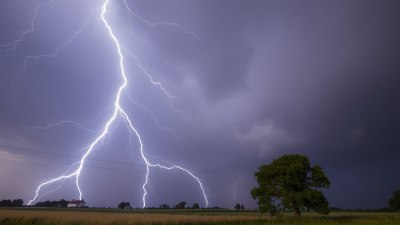Why Pollen Levels Soar When the Days Get Warmer
Discover the reasons behind rising pollen levels in warmer weather and how it affects allergies.

As winter fades and spring emerges, many people celebrate the warmer days ahead. However, the arrival of warmer temperatures also signals the beginning of a season plagued by allergies, primarily due to rising pollen levels. Understanding the relationship between warmer days and increased pollen production is crucial for those affected by seasonal allergies. Let's explore the science behind pollen levels, the factors influencing them, and how to manage the symptoms effectively.
The Basics of Pollen
Pollen is a fine powder produced by trees, flowers, grasses, and weeds as part of their reproductive process. The primary purpose of pollen is to fertilize other plants, leading to seed and flower production. These tiny particles can travel vast distances in the air and are a major trigger for allergic reactions in susceptible individuals.
Types of Pollen
There are various types of pollen, categorized mainly as tree, grass, and weed pollen. Tree pollen typically appears first in the spring, followed by grass and then weed pollen in late summer and fall. Each type of pollen has its season, and the amount released can vary significantly based on environmental conditions.
Temperature and Pollen Production
The relationship between temperature and pollen levels is complex but understandable. Warmer temperatures trigger physiological responses in plants, leading to increased pollen production and release. When temperatures rise, plants start their reproductive cycle earlier, resulting in an increase in pollen counts. Research indicates that higher temperatures and longer growing seasons correlate with greater pollen emissions.
Humidity: A Key Factor
Humidity levels play a significant role in pollen dispersal. When the air is humid, pollen grains absorb moisture and become heavier, causing them to settle. Conversely, dry conditions allow pollen to remain airborne longer. Warmer days often come with changes in humidity, influencing how far and how long pollen travels in the air. This interaction means that an increase in temperature coupled with low humidity can lead to spikes in pollen concentrations.
Carbon Dioxide Levels
As global CO2 levels continue to rise due to human activities, many plants are expected to produce more pollen as a response to increased atmospheric carbon. Studies have shown that elevated CO2 levels can enhance the growth of some plants and their pollen production, which may lead to longer pollen seasons and more seasonal allergies.
Changes in Flowering Times
Warmer temperatures can also lead to earlier flowering times for several plants. Many species respond to the accumulation of warmth during late winter and early spring by blooming sooner than they would under cooler conditions. This shift not only affects when pollen is released but also extends the duration of pollen production, increasing the risk for allergy sufferers.
The Allergic Response
When pollen enters the respiratory system of susceptible individuals, it can trigger an immune response leading to symptoms such as sneezing, nasal congestion, itchy eyes, and difficulty breathing. This response is part of the body's attempt to reject what it perceives as foreign invaders. The severity of allergic reactions can vary based on the amount and type of pollen present in the environment.
Geographical Influence
The impact of warmer temperatures on pollen levels can vary depending on geographical location. Regions with milder climates may experience extended pollen seasons, while areas with harsh winters may see a sudden spike in pollen levels when spring arrives. Monitoring local pollen forecasts can help individuals prepare for high pollen days and manage their symptoms effectively.
Climate Change and Pollen
As climate change progresses, scientists anticipate it will disrupt traditional patterns of pollen production. The warming climate is likely to result in longer and more severe pollen seasons. This trend is concerning for allergy sufferers, as increased pollen levels may exacerbate allergic reactions and respiratory disorders.
Managing Allergies
For those affected by seasonal allergies, understanding the patterns of pollen levels can aid in managing their symptoms. Here are some strategies:
- Monitor pollen forecasts using apps or websites dedicated to allergy sufferers.
- Limit outdoor activities on days when pollen counts are high.
- Keep windows closed and use air purifiers to reduce indoor pollen exposure.
- Consult with healthcare providers about appropriate medications to manage symptoms.
- Consider allergy testing to identify specific triggers and tailoring a management plan accordingly.
The relationship between warmer days and soaring pollen levels is a phenomenon that affects many individuals during the spring and summer months. By understanding the scientific principles behind pollen production, individuals can better navigate their allergy symptoms. As we continue to confront climate change, awareness of its potential impacts on pollen levels is increasingly crucial. Taking proactive measures can help allergy sufferers reclaim their outdoor enjoyment even as pollen counts rise.











